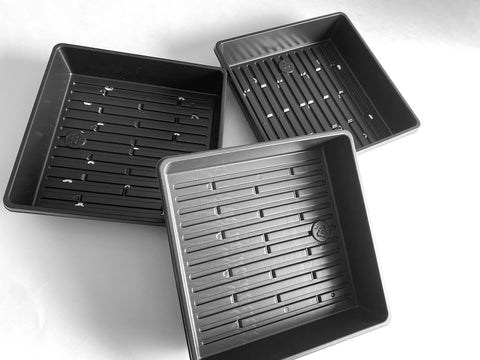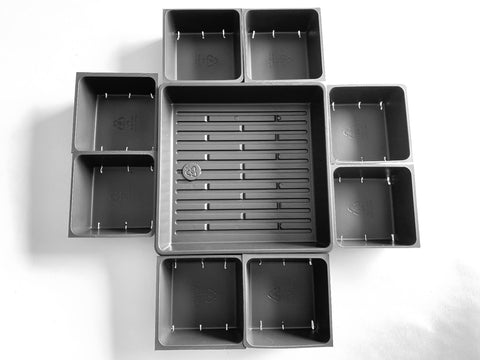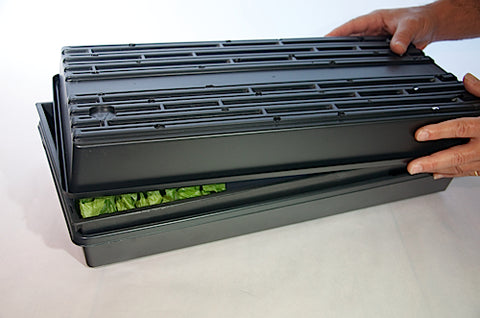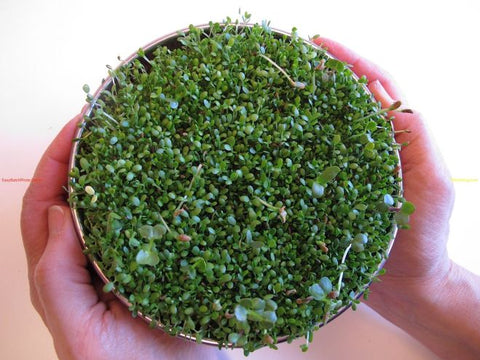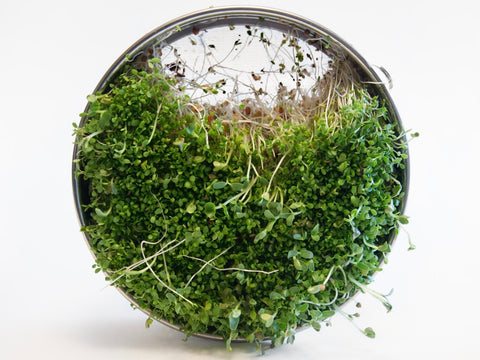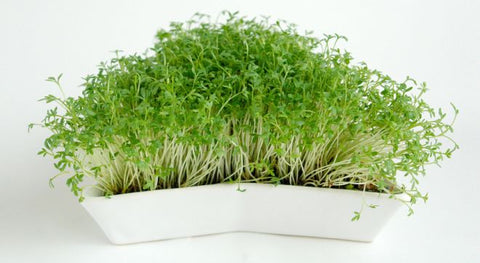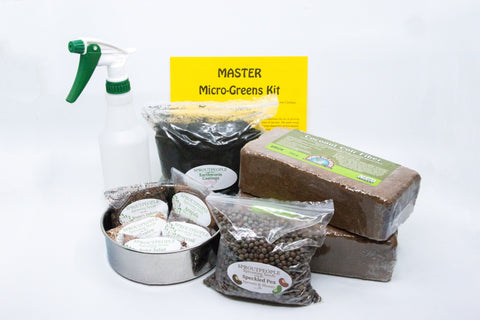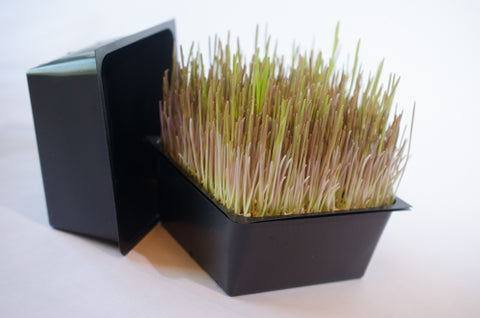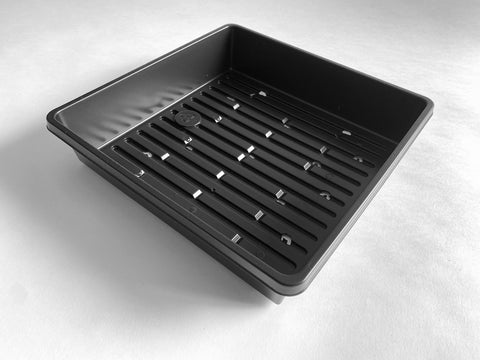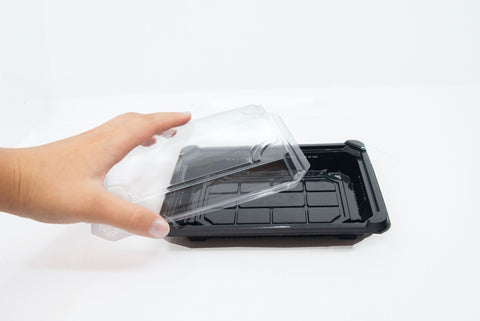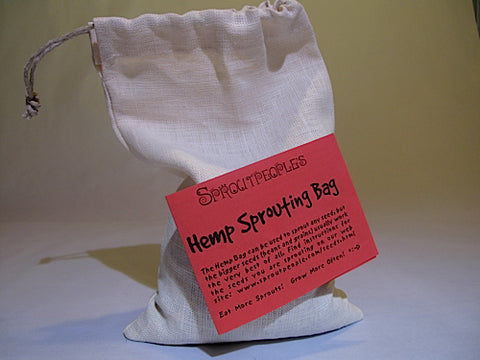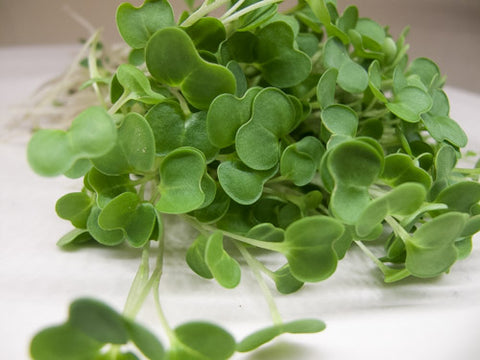
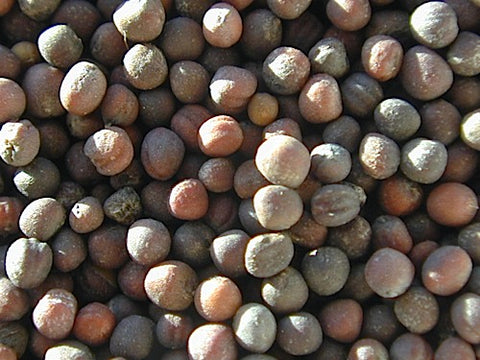
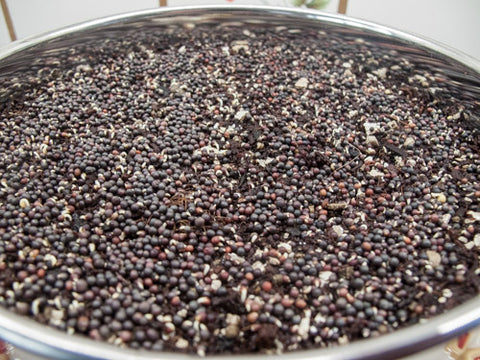
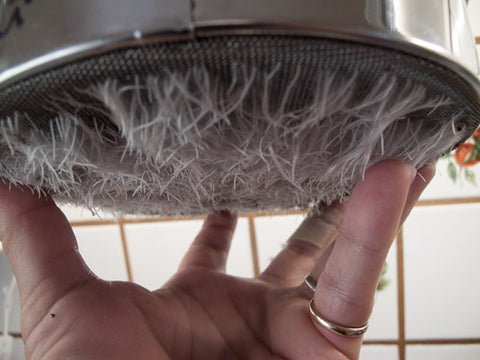
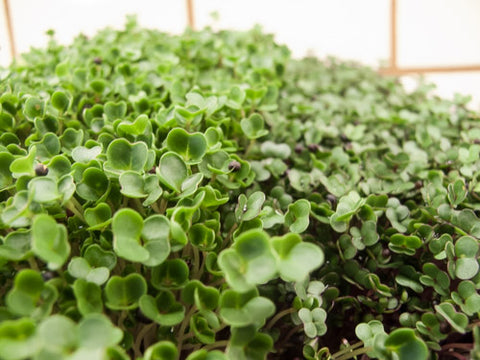
Kale Micro-Greens - Green Kale
Mild, sweet, flavor similar to other Brassicas. Green Kale produces another lovely, and exceptionally tasty Micro-Green.
This is the same seed we sell for Green Kale Sprouts.
Note: We sell Green Kale by the 1/2 pound.
Vitamins A, B, C, E and K
Calcium, Iron, Magnesium, Phosphorus, Potassium, Zinc
Carotene, Chlorophyll, Amino Acids, Trace Elements
Antioxidants
Protein: 30-35%
Nice, mild and nutty. Very tender.
The time it takes to grow a finished 5 - 14 days, or other crop (Micro-Greens, Grass, Greens) from a dry Seed. Note: This "finished" Sprout is our preference. you may grow them for as long as you want! In fact, we suggest that you taste them at every rinse to discover when you like them best.
How to Grow Kale Micro-Greens - Green Kale
- Plant 1-2 teaspoons of seed (for a 5x5 inch Tray) on thoroughly moistened medium.
- Cover your crop with another tray, or a plate - to keep light out and moisture in.
- Keep your medium moist by watering lightly as needed. Don't drench!
Use Coconut Coir and you likely won't have to water at all after planting! - When your plants have begun to show leaves, remove cover and move your crop to a well lit location.
- Harvest when the leaves are open and an inch or three tall (day 5-14).
- Cut just above the medium, with a scissors or sharp knife.
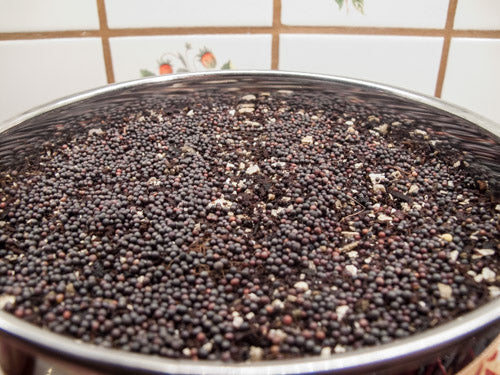
When growing Micro-Greens we start with a thoroughly moistened Medium, upon which we spread our dry seed, and then cover with a plate. The seed of most Brassicas is virtually identical. What you are seeing here is both Green Kale seed (on the left) and Red Russian Kale seed (on the right). Can You see the difference?;-)
We are using our Stainless Steel Sprouter, filled 3/4 full (more is even better) with our mix of 80% Coconut Coir, 20% Earthworm Castings, and 20% Vermiculite. Thoroughly moist means saturated, but not dripping.
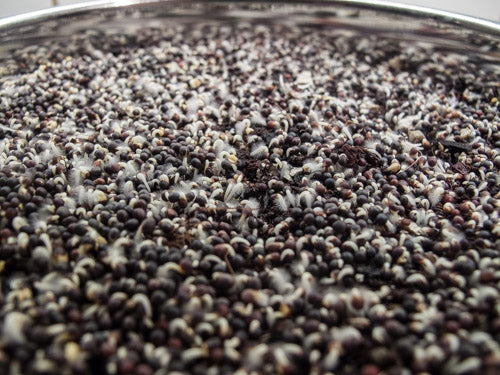
24 hours later we are already seeing germination. Your crop remains covered, but there isn't much of a photo op in that, so this is what they look like - under the covering plate. You don't have to do anything to grow this crop except remove the cover, and I'll tell you when to do that - a few pictures down.
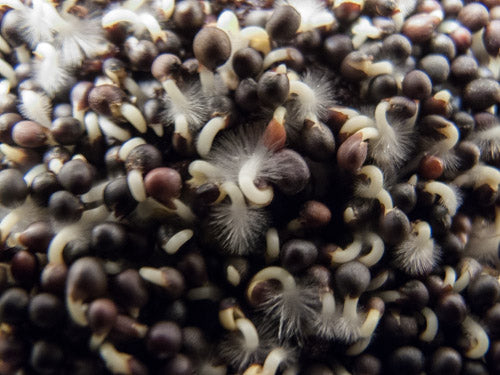
Same time - just closer. The fuzzy stuff you see is Not mold - those are Root Hairs - microscopic roots which grow off the tap (main) root. They are good. They are beautiful. If you have a magnifying glass, take a look. When we see Root Hairs on sprouts they disappear after Rinsing because the water makes them fall back along the tap root. Since we are not watering our Micros they stay visible. If you were to water now they would vanish. Enjoy them.
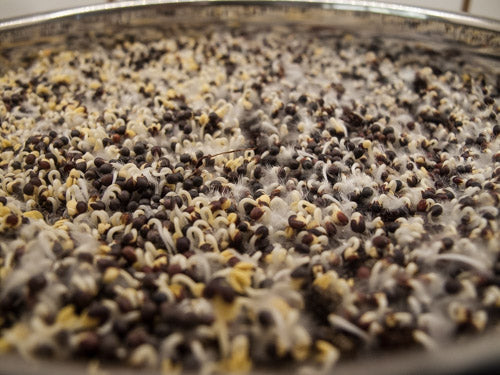
12 hours later.
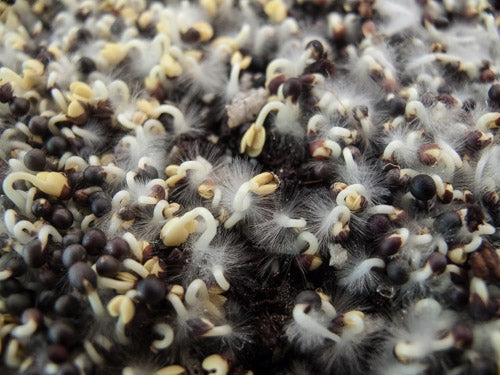
At the same time - here's another look at those lovely Root Hairs.
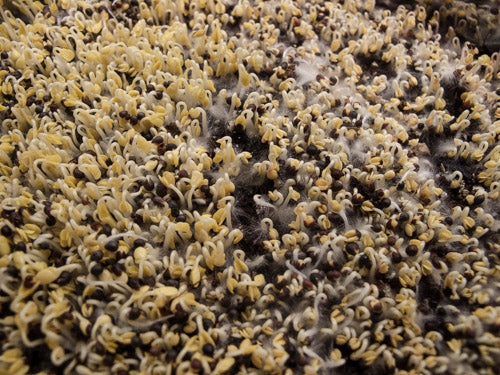
12 hours later.
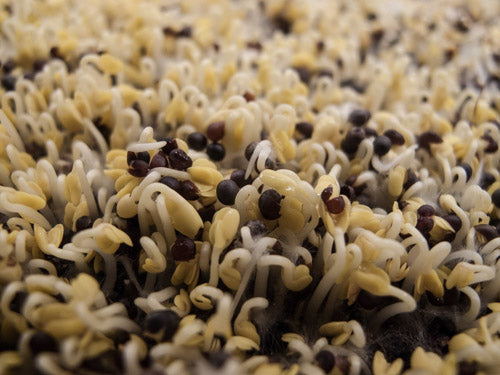
A closer look, at the same time.
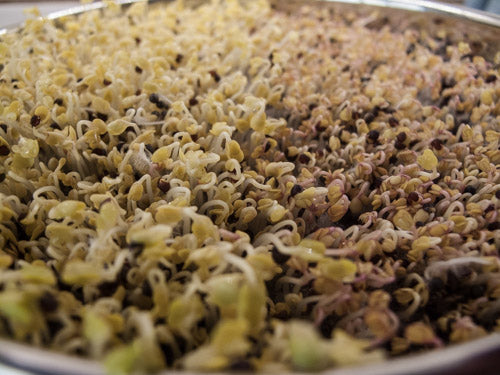
A mere 12 hours later.
We can really see which side is Red Kale now.
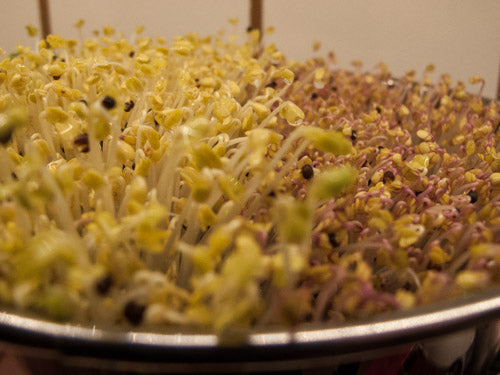
12 hours later and it's time to remove the covering plate.
Move your tray to a well lit location. Sun is fine and dandy when growing Micro-Greens.
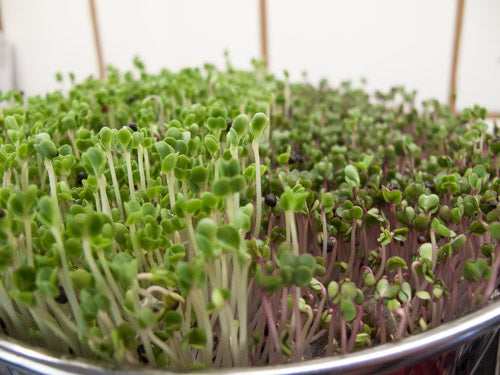
Look at what happens after just 12 hours of light!
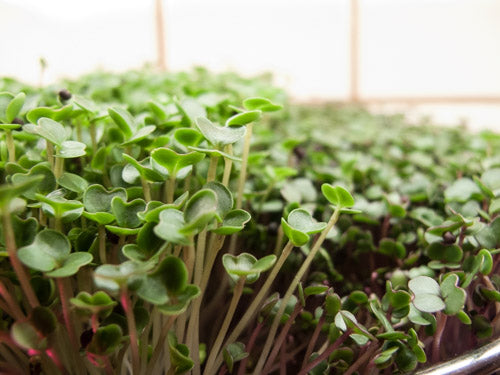
12 hours later.
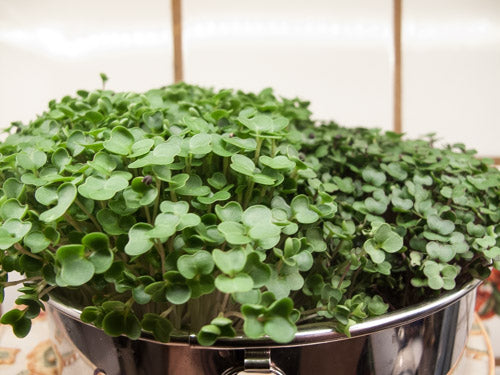
This is 24 hours later - just for a change of pace =;-)
As you've likely noticed, the Green Kale grows taller faster.
That isn't always the case, but it's common enough.
You can Harvest now if you wish. Actually you can harvest any time you like. Cut a few Micro-Greens off and see how you like their texture. That is the main thing that'll change as you continue to grow. Younger = more tender, but they remain texturally pleasing for several more days, at least. Harvesting is just a matter of cutting them off close to the Medium.
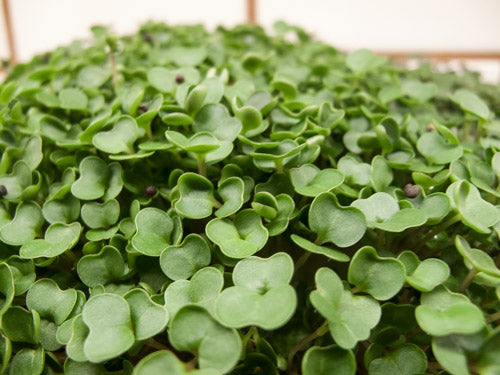
24 hours later.
This is just the Green Kale Micros.
Since I planted on that lovely Medium I described under the first picture - I didn't water my crop at all - until just after I took this picture.
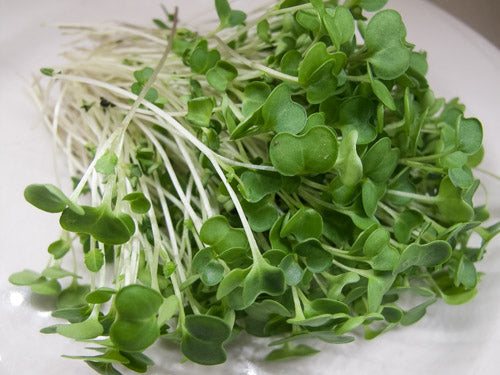
I was cutting some off every day, but I didn't take this picture until 6 more days passed.
These are fresh cut and DElicious as well as gorgeous!
I'm writing this a week after I took this picture and I still have some growing as I seek True Leaves. I've got some, but they are not nearly as tender - though they still taste awesome.
My advice is to harvest when they are all Cotyledons (the first leaves), but experiment for yourself and see what you like best.
Micro-Greens don't store very well and they are Perfection when freshly cut, so eat 'em up and start another crop sprout farmer =:-)

When growing Micro-Greens we start with a thoroughly moistened Medium, upon which we spread our dry seed, and then cover with a plate. The seed of most Brassicas is virtually identical. What you are seeing here is both Green Kale seed (on the left) and Red Russian Kale seed (on the right). Can You see the difference?;-)
We are using our Stainless Steel Sprouter, filled 3/4 full (more is even better) with our mix of 80% Coconut Coir, 20% Earthworm Castings, and 20% Vermiculite. Thoroughly moist means saturated, but not dripping.

24 hours later we are already seeing germination. Your crop remains covered, but there isn't much of a photo op in that, so this is what they look like - under the covering plate. You don't have to do anything to grow this crop except remove the cover, and I'll tell you when to do that - a few pictures down.

Same time - just closer. The fuzzy stuff you see is Not mold - those are Root Hairs - microscopic roots which grow off the tap (main) root. They are good. They are beautiful. If you have a magnifying glass, take a look. When we see Root Hairs on sprouts they disappear after Rinsing because the water makes them fall back along the tap root. Since we are not watering our Micros they stay visible. If you were to water now they would vanish. Enjoy them.

12 hours later.

At the same time - here's another look at those lovely Root Hairs.

12 hours later.

A closer look, at the same time.

A mere 12 hours later.
We can really see which side is Red Kale now.

12 hours later and it's time to remove the covering plate.
Move your tray to a well lit location. Sun is fine and dandy when growing Micro-Greens.

Look at what happens after just 12 hours of light!

12 hours later.

This is 24 hours later - just for a change of pace =;-)
As you've likely noticed, the Green Kale grows taller faster.
That isn't always the case, but it's common enough.
You can Harvest now if you wish. Actually you can harvest any time you like. Cut a few Micro-Greens off and see how you like their texture. That is the main thing that'll change as you continue to grow. Younger = more tender, but they remain texturally pleasing for several more days, at least. Harvesting is just a matter of cutting them off close to the Medium.

24 hours later.
This is just the Green Kale Micros.
Since I planted on that lovely Medium I described under the first picture - I didn't water my crop at all - until just after I took this picture.

I was cutting some off every day, but I didn't take this picture until 6 more days passed.
These are fresh cut and DElicious as well as gorgeous!
I'm writing this a week after I took this picture and I still have some growing as I seek True Leaves. I've got some, but they are not nearly as tender - though they still taste awesome.
My advice is to harvest when they are all Cotyledons (the first leaves), but experiment for yourself and see what you like best.
Micro-Greens don't store very well and they are Perfection when freshly cut, so eat 'em up and start another crop sprout farmer =:-)
Yields approximately as many Micro-Greens (by weight) as seed "planted" We put quotes around Planted because the seeds are always spread atop a medium - not planted under.
These seeds can benefit from Soaking and a tiny bit of Pre-Sprouting prior to planting. You don't have to do this, but it may help produce a better crop if you do. To Soak a seed is to save it the time it takes for it to drink up its fill of water from the medium it is planted atop, so that alone will save you a day, but wet seeds are more difficult to work with when Planting. As always, we suggest you try variations and see what you like best. Learning is half the fun!
Put seed* into a bowl or your Sprouter. Add 2-3 times as much cool (60-70°) water. Mix seeds up to assure even water contact for all. Allow seeds to Soak for 8-12 hours.
Empty the seeds into your sprouter if necessary. Drain off the Soak water. Use it to water plants, or anything else - it has nutrients in it.
Rinse thoroughly with cool (60-70°) water and Drain thoroughly.
Set anywhere out of direct sunlight and at room temperature (70° is optimal) between Rinses. This is where your sprouts do their growing. We use a counter top - in the corner of our kitchen, but where the sprouter won't get knocked over by cats, dogs, kids or us. We don't mind the indirect sunlight or the 150 watts of incandescent light, because light just does not matter much. A plant can only perform photosynthesis when it has leaves. Until then light has little if any effect, so don't hide your sprouts. When leaves appear this will be plenty of light for them to green up! When we're sprouting Mung Beans we may choose a darker corner, but 99% of the time we just don't avoid light.
Rinse and Drain again in 8-12 hours. And, perhaps one more... Rinse and Drain in 8-12 hours.
The goal is to have a very small root - or even the first sign of a root - before planting. However many Rinse and Drain cycles it takes to get to that first sign - or up to a 1/16th inch root - is how long you should Pre-Sprout.
(see Notes (below) for variations)
Grow these on soil or Baby Blanket (a soilless medium) in a Tray, on a Hemp Bag, in our Compostable Tray (which holds Baby Blanket very nicely) or on virtually any moisture retaining medium (theoretically as minimal as paper towel or fabric - like cheesecloth) you can think of.
Whether you have soaked, pre-sprouted or are starting with dry seed, this is the way to proceed:
Thoroughly moisten the Medium upon which you are going to grow. Whether you are using a Hemp Bag, Baby Blanket, or another medium - lay it on a plate or in a pan or something - so that you don't end up watering your counter. If you are using a Tray with drainage slits to hold your medium, put it on a plate or in a solid (Drip) Tray - or use a plate or pan to capture the water runoff.
Spread seeds sparsely on your thoroughly moistened medium. There should be a bit of space around each seed but you are not expected to place them one at a time - just spread them out as much as you can and as evenly as you can, within reason.
You may cover your seeds: If planting on soil or another medium in a Tray use another identical tray - up side down. If using a Compostable Tray you can cover the tray for the first 2-3 days. If using a Hemp Bag, Baby Blanket, or another medium - be creative. If it's on a plate then use an identical plate (upside down) as a cover. It is not mandatory when growing Micro-Greens to cover them at all. Experiment for yourself and see what works best in your climate/location.
Place your Micro-Garden in a low-light, room temperature location (70° is optimal).
Keep the medium moist - but not soggy - by watering or misting with a Spray Bottle every day.
Note: These wonderful little Brassica plants have a unique root structure. Brassicas will show microscopic roots starting around day 3. They are called root hairs and are most visible just before watering - when the plants are at their driest. These root hairs impress many people as mold - but they are not. Now you know. Isn't learning fun?!
When your plants grow up and begin to shed their hulls they are ready for light so move them (if necessary) to a well lighted location. If you go with sunlight be prepared to water more frequently. Room light will usually do quite nicely - and will not dry out your medium as quickly.
Keep the medium moist but not soggy by watering regularly. Water from the side if possible to prevent injuring the tiny plants - especially if you are not using a Spray Bottle.
When your plants have open leaves which are green, they are done.
Harvest
Cut the plants just above the medium upon which they have grown. During the final 8-12 hours minimize the surface moisture of your plants - they will store best in your refrigerator if they are dry to the touch. So if you water try to keep the water off the plants - just water the medium.
When you are ready to store them (I'll remind you that these degrade fast, so eat them instead of storing them if you can), if they are still damp - lay them between some paper towels or anything you prefer, and dry them very gently. Transfer your crop to a plastic bag or the sealed container of your choice - glass is good. We sell an amazing Produce Storage Bag that actually extends the shelf life of produce, if you're interested in the best of the best =;-) Whatever you store them in; put them in your refrigerator - if you must.
* Dry Seed Volume
See our Notes (below) for Variations.
If using Sproutpeople's Single Harvest Pack and a 5x5 inch Tray; use the whole bag.
2 Teaspoons for our little 5 inch tray. 2 scant Tablespoons for an 10 inch square tray. 4 Tablespoon for an 10 x 20 inch tray.
The first time you grow these you should consider giving quite a bit of space to each seed just to familiarize yourself with the plants' habit. Our suggested Dry Seed Volume will provide you with this space.
Sprout Note:
You can also grow Kale using conventional sprouting methods as described on our Kale page.
Another garden variety Brassica, Kale comes in several leaf shapes and colors. We were offered this Green Kale by our farmer friend in Illinois. It sprouts and grows micro-greens exceptionally well, and the price was right - so we got some. We don't know if this is a seed he'll keep producing or not, so get it while we have it.
Green Kale may also be grown as a sprout, as detailed on our Green Kale page.
We also sell Red Russian Kale.
Note: Canadian and US researchers have found that Brassicas contain antioxidants such as sulfurophane. Kale is a Brassica.
Our green kale comes from farmer Ed in Illinois. He doesn't grow it every year, but it's great seed. Get it while you can.
Seed Shelf Life: 5 years. Store in cool, dark, dry spot. Store in freezer to extend shelf life.

